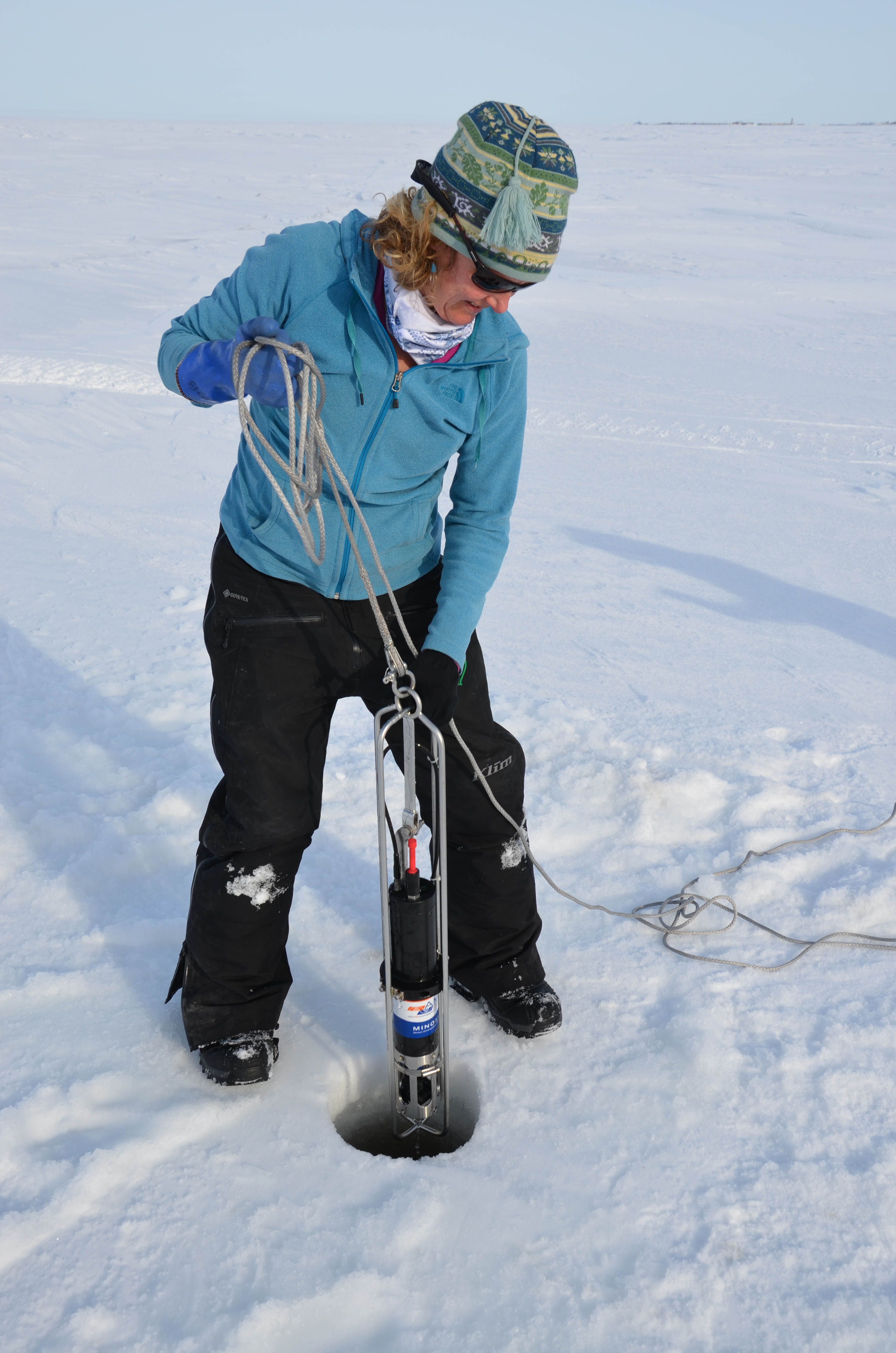First Field Samples Gathered in Beaufort LTER since 2019

A recent field trip marked the restart of the sampling for the National Science Foundation-funded Beaufort Lagoon Ecosystems Long-Term Ecological Research project after a year-long interruption caused by the COVID-19 pandemic.
ACEP’s Eloise Petrone Brown traveled with four other researchers from UAF and the University of Texas at Austin to collect physical oceanographic measurements under the sea ice at the Stefansson Sound and Simpson Lagoon sites on the northern Alaska Arctic coast. Other members of the team focused on collecting samples of ice algae, seawater, plankton, seafloor sediments and benthic organisms.
“The Beaufort Sea lagoons are complex and productive ecosystems,” according to the BLE LTER website. “These systems encompass more than half of the Beaufort Sea coast, providing food and habitat for large populations of migratory fish and waterfowl essential to the culture of northern Alaska's Iñupiaq communities. Dozens of rivers, the 'highways of Alaska,' altogether making up a vast drainage basin, flow into the Beaufort Sea through these lagoons.”
In order to understand the water characteristics, Brown made measurements of water depth, salinity and temperature with a conductivity/temperature/pressure sensor, along with under-ice water speeds using an acoustic Doppler current profiler.
“This was the first year that an ADCP was deployed under the ice for this project, and also the first time that transects were established. In each lagoon, we took measurements along a transect consisting of 3 stations,” Brown said.
The goal for the physical measurements on this trip was to capture any stratification in the water column and to begin to quantify transport throughout the lagoons with the ADCP, CTP casts and water samples.
“We observed a highly saline bottom layer at Simpson Lagoon, but no stratification in Stefansson Sound,” Brown added.
Ultimately, these data will be used to understand lagoon-scale hydrodynamics, capture the Sagavanirktok River runoff, and ground-truth hydrodynamic and sea ice modeling efforts in these lagoons. Researchers from UT Austin, Oregon State University and UAF lead the effort.
All five researchers observed a 10-day quarantine and endured multiple COVID-19 tests prior to traveling to Deadhorse for the research.
For more information on ACEP’s involvement with the BLE LTER, please contact Jeremy Kasper jlkasper@alaska.edu or Eloise Brown at eloise.brown@alaska.edu.
This work was funded under NSF Award # 1656026 “LTER: Beaufort Sea Lagoons: An Arctic Coastal Ecosystem in Transition."
Eloise Petrone Brown lowers an instrument through the ice to measure salinity, depth and temperature of the water. Photo by Ken Dunton, University of Texas, Austin.


